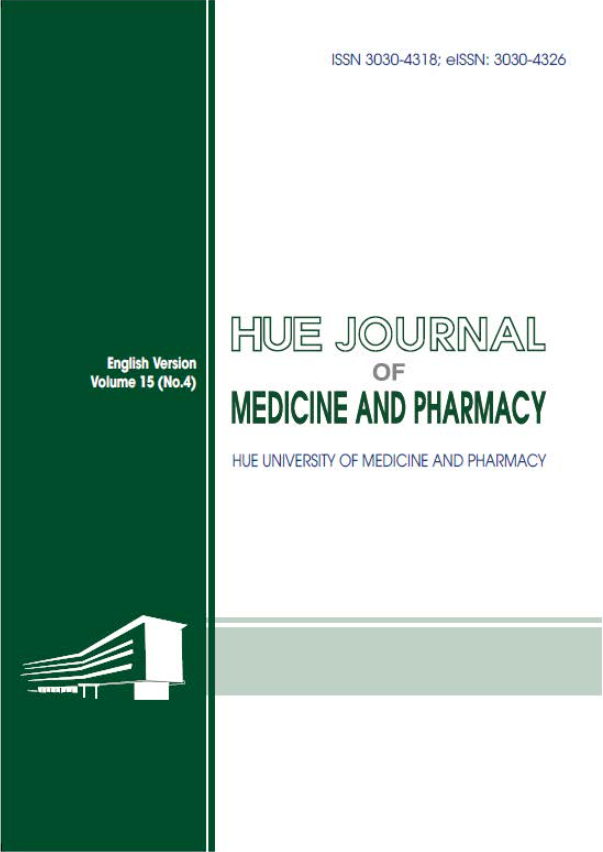Abstract
Introduction: A common cause of failure in endodontic treatment is bacterial penetration into the root canal system through microleakage after obturation, particularly when post-space preparation is required.
Objective: To evaluate bacterial leakage in post-space prepared to half the root canal length using different methods following root canal obturation.
Subjects and Methods: An in vitro study, without a control group, was conducted on 40 mandibular premolars, which were divided into 4 groups according to the obturation method and the timing of post-space preparation. Bacterial leakage was assessed by the turbidity of the BHI solution in each group, and Gram staining was performed if turbidity appeared.
Results: Group 1 exhibited a delayed bacterial leakage time compared to Group 2. Additionally, Group 3 showed a later leakage time than Group 4. However, Group 1 had an earlier bacterial leakage time compared to Group 3, and Group 2 had an earlier leakage time than Group 4. The differences were statistically significant (p < 0.05). Gram-positive bacteria (90%) and Gram-negative bacteria (10%) were identified in the group with lateral compaction obturation. In the group with thermoplasticized Gutta Percha obturation, only Gram-positive bacteria (100%) were found.
Conclusion: Immediate post-space preparation resulted in a significantly delayed bacterial leakage compared to delayed post-space preparation. Post-space preparation in teeth obturated with thermoplasticized Gutta Percha resulted in a significantly delayed bacterial leakage compared to those obturated using the lateral compaction technique.
| Published | 2025-08-30 | |
| Fulltext |
|
|
| Language |
|
|
| Issue | Vol. 15 No. 4 (2025) | |
| Section | Original Articles | |
| DOI | 10.34071/jmp.2025.4.19 | |
| Keywords | Bacterial leakage, post-space preparation, obturation |

This work is licensed under a Creative Commons Attribution-NonCommercial-NoDerivatives 4.0 International License.
Copyright (c) 2025 Hue Journal of Medicine and Pharmacy
Nagas E., Karaduman E., Sahin C., Uyanik O., Canay S.. Effect of post space preparation timing on the apical seal when using different sealers and obturation techniques. Journal of Dental Sciences, 2016;11(1):79-82.
Shetty C., Qaiser S., Shetty A., Shetty A., Shroff R.. Evaluation of Microleakage of Nanoparticle-incorporated Cyanoacrylate Root Canal Sealer Using the Radioisotopic Method: An In Vitro Study. The Journal of Contemporary Dental Practice, 2024;25(4):335-41.
Grassi M.D., Plazek D.J., Michanowicz A.E., Chay I.C.. Changes in the physical properties of the Ultrafil low-temperature (70°C) thermoplasticized gutta-percha system. Journal of Endodontics, 1989;15(11):517-21.
Reyhani M.F., Ghasemi N., Rahimi S., Milani A.S.. Apical microleakage of AH Plus and MTA Fillapex® sealers in association with immediate and delayed post space preparation: a bacterial leakage study. Minerva Stomatol, 2015;64(3):129-34.
Solano F., Hartwell G., and Appelstein C.. Comparison of Apical Leakage Between Immediate Versus Delayed Post Space Preparation Using AH Plus Sealer. Journal of Endodontics, 2005;31(10):752-54.
Haddix J.E., Mattison G.D., Shulman C.A., Pink F.E.. Post preparation techniques and their effect on the apical seal. The Journal of Prosthetic Dentistry, 1990;64(5):515- 19.
Kampf G., Meyer B., and Goroncy-Bermes P..Comparison of two test methods for the determination of sufficient antimicrobial activity of three commonly used alcohol-based hand rubs for hygienic hand disinfection. Journal of Hospital Infection, 2003;55(3):220-25.
Miletić I., Anić I., Pezelj-Ribarić S., Jukíc S.. Leakage of five root canal sealers. International Endodontic Journal, 1999;32(5):415-18.
Chen G. and Chang Y.C.. Effect of Immediate and Delayed Post Space Preparation on Apical Leakage Using Three Root Canal Obturation Techniques After Rotary Instrumentation. Journal of the Formosan Medical Association, 2011;110(7):454-59.
Farias A.B., Pereira K.F.S., Beraldo D.Z., et al. Efficacy of three thermoplastic obturation techniques in filling oval-shaped root canals. Acta Odontológica Latinoamericana, 2016;29(1):76-81.
Ørstavik D., Nordahl I., and Tibballs J.E..Dimensional change following setting of root canal sealer materials. Dental Materials, 2001;17(6):512-19.
Modaresi J., Baharizade M., Shareghi A., Daneshkazemi A.. Copper Ion as a New Leakage Tracer. Journal Dental (Shiraz), 2013;14(4):155-59.
Dhaded N., Dhaded S., Patil C., Patil R., Roshan J.M.. The Effect of Time of Post Space Preparation on the Seal and Adaptation of Resilon-Epiphany Se & Gutta-percha- AH Plus Sealer- An Sem Study. Journal Clinical Diagnose Research, 2014;8(1):217-20.
Sukaton S., Mooduto L., and Andani S.. Effectiveness of Sealer Combination Zinc Oxide (ZnO) with Red Pine (Pinus densiflora) on Viscosity and Solubility (Laboratory Experimental). Conservative Dentistry Journal, 2021;11(1):6-10.
Mohammadi Z. and Yazdizadeh M.. Evaluation of the antibacterial activity of new root canal sealers. Journal Clinical Dental, 2007;18(3):70-2.






